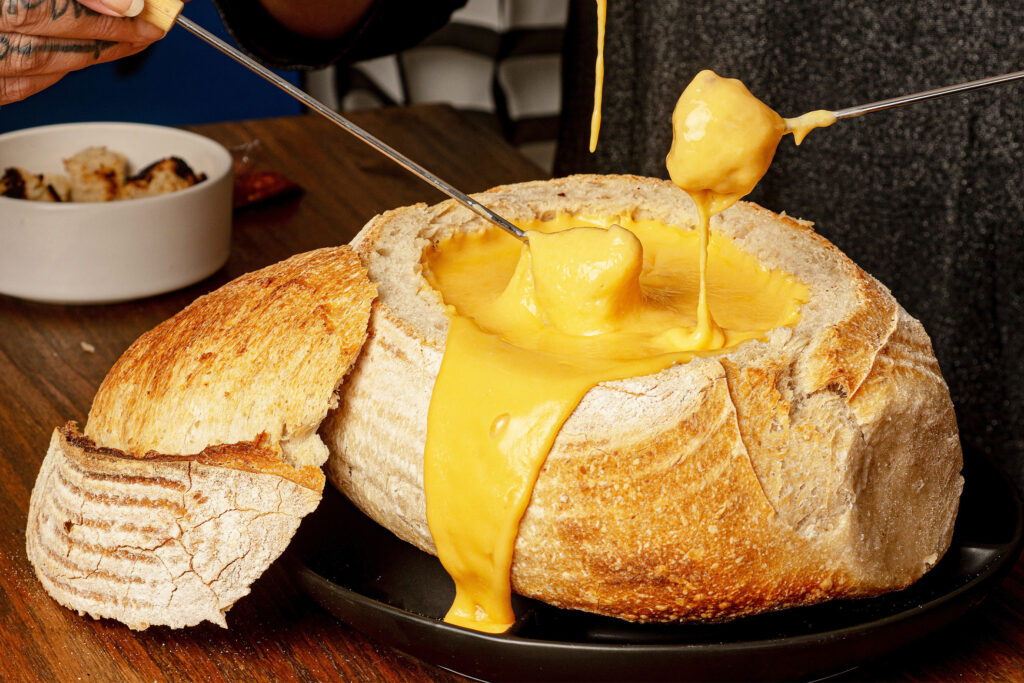
From Cavemen to Chefs: The History of Delicious Cuisines of Tapas and Tacos to Fondue and Pizza
Food has been a fundamental part of human survival and culture for thousands of years. Early human societies were primarily focused on hunting and gathering, but as civilizations developed, so did agriculture and food preservation methods.
Throughout history, food has been used for sustenance, as well as for cultural and religious rituals. As human societies became more globalized, new ingredients and cooking techniques were introduced from different regions, leading to today’s diverse cuisines.
Additionally, technological advancements in transportation and storage have greatly expanded the availability of ingredients and food products.
Different foods evolved in other areas due to environmental and cultural factors. The climate, soil, and available resources of a region greatly influenced the types of crops that could be grown and the animals that could be raised for food.
Cultural and historical events, such as trade and migration, also shaped local cuisines by introducing new ingredients and cooking techniques.
For example, spices and herbs used initially for preservation in hot climates eventually became an integral part of cuisines. Dietary restrictions and cultural traditions also impacted the types of foods consumed in different regions.
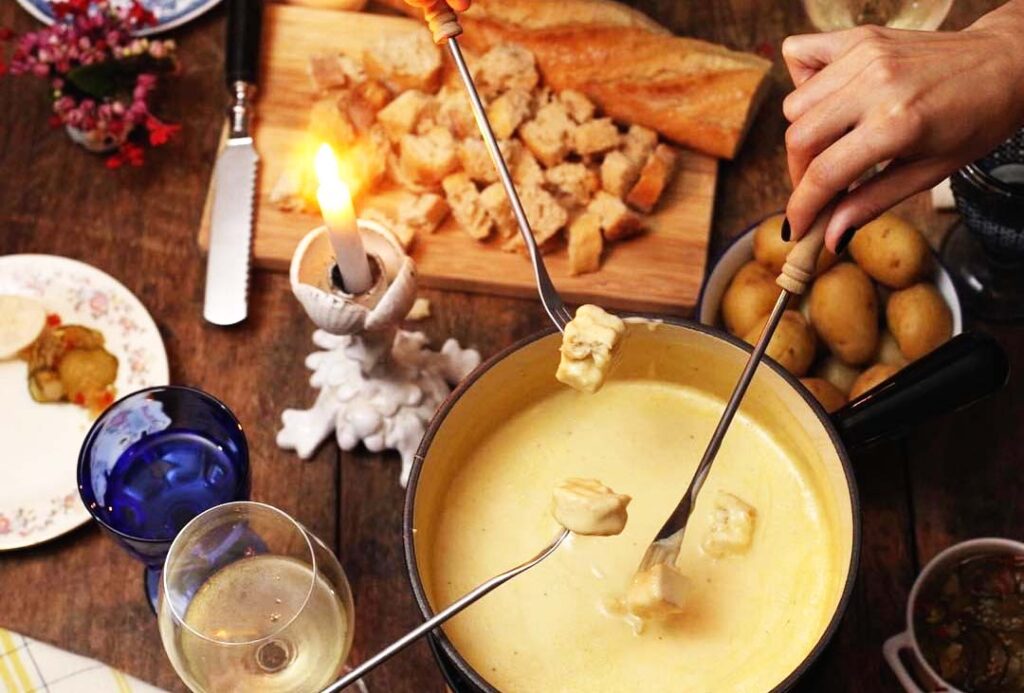
Fondue
Fondue is a traditional Swiss dish that originated in the Alpine regions of Switzerland in the 18th century. The dish consists of melted cheese or chocolate served in a communal pot into which bread or other foods are dipped. Fondue was created to use stale bread and leftover cheese and popularized as a symbol of Swiss national identity in the 1930s.
Fondue became a popular dish in the United States in the 1960s and 1970s and has since been adapted in various forms around the world, including meat and broth fondue. Despite its popularity, fondue is still considered a traditional dish and is often served during special occasions and holidays in Switzerland.
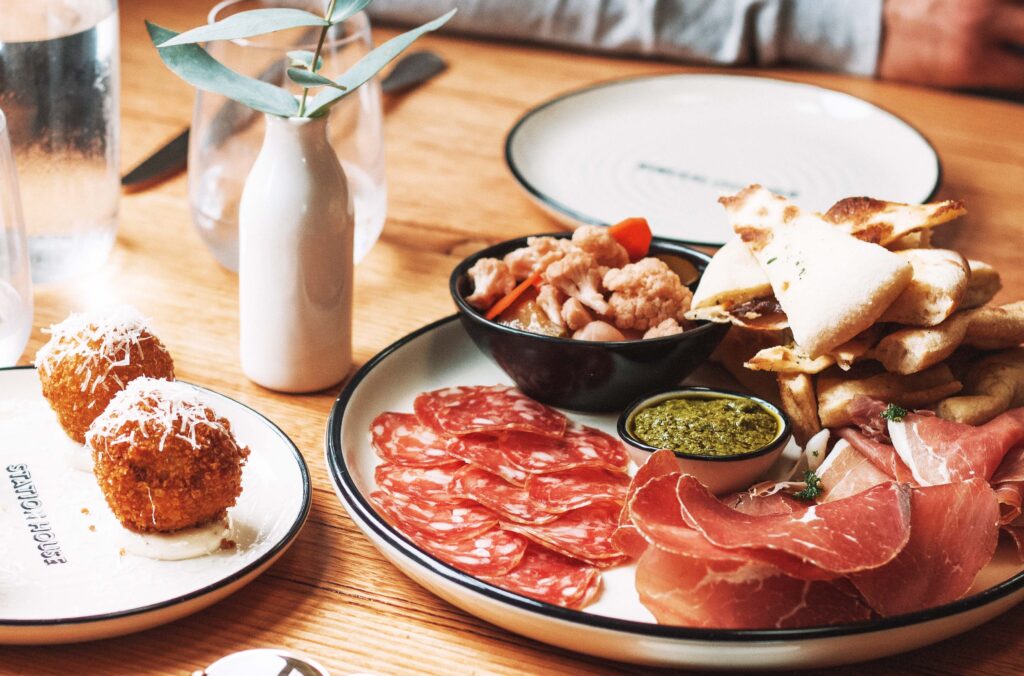
Tapas
Tapas originated in Spain to serve small snacks or appetizers with drinks, particularly wine. The name “tapas” is derived from the Spanish word “tapa,” which means “lid.” It is said to have originated when King Alfonso X of Spain ordered that a slice of bread or a small dish be placed over drinks to keep flies out, leading bar patrons to order additional small snacks for their drinks.
Over time, tapas evolved into a distinct culinary tradition, with a wide variety of small plates served in bars and restaurants across Spain.
These days, tapas are widely popular in Spain and other countries worldwide and are often served as a social and communal dining experience.
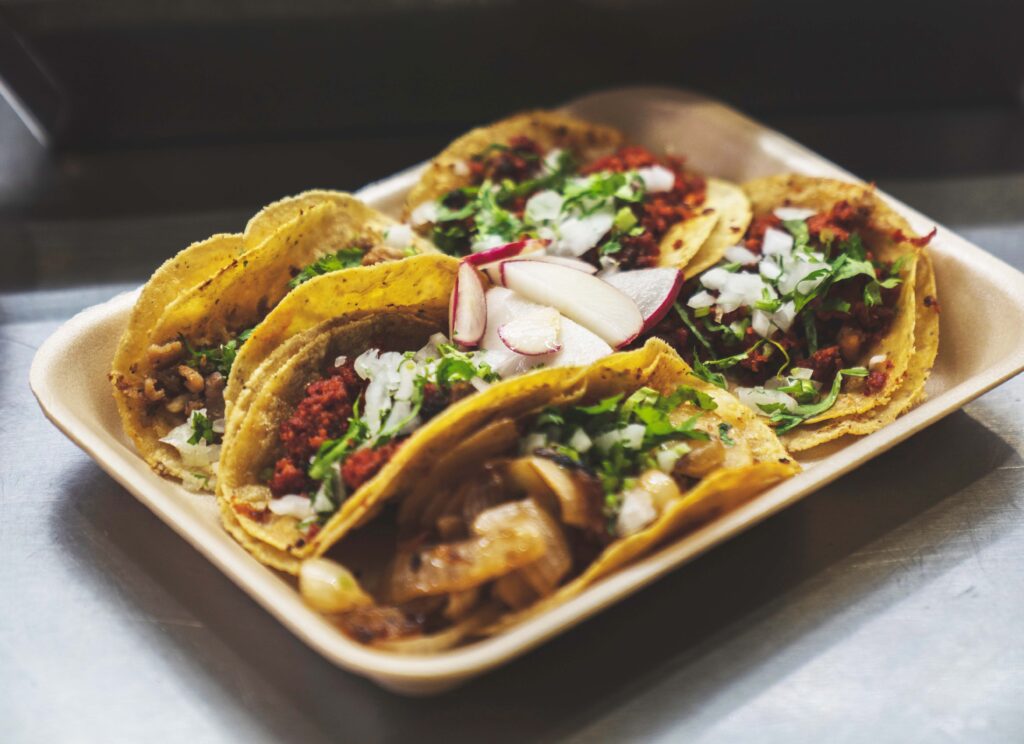
Tacos
Tacos are a traditional Mexican dish that has been around for hundreds of years. The origins of tacos can be traced back to the indigenous peoples of Mexico, who would wrap food in tortillas made from corn. Tacos as we know them today, filled with various meats, vegetables, and spices, became popular in the 1900s and have since spread worldwide, becoming a staple of local Mexican cuisines and a popular food item in many countries.
Tacos are versatile, easy to make, and can be customized to fit individual tastes and preferences. They are often served as street food and can be found at taquerias, Mexican restaurants, and food trucks; and are a staple of Mexican cuisine and a popular food item in many countries.

Pizza
Pizza is a popular dish with its roots in ancient civilizations in the Mediterranean, including Greece and Egypt. Modern pizza originated in Naples, Italy, in the 18th century and was typically a simple dish made with tomato sauce, cheese, and toppings such as anchovies or garlic.
Pizza gained popularity in the United States in the late 1800s and early 20th century with the arrival of Italian immigrants and has since evolved into a diverse and widely popular dish with countless variations and styles.
These days, pizza is enjoyed worldwide and is often made with a wide range of ingredients, from classic Margherita to more creative toppings like barbecue chicken and pineapple. Whether made at home or ordered from a pizzeria, pizza remains one of the world’s most beloved and universally enjoyed foods.
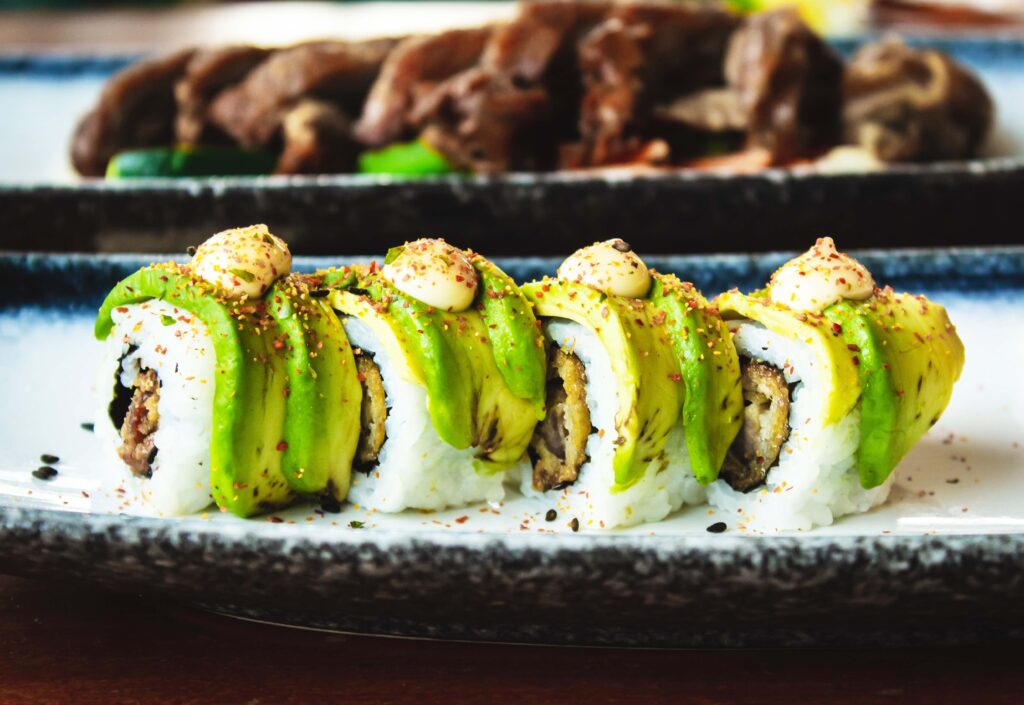
Sushi
Sushi is a traditional Japanese dish enjoyed for over a thousand years. It originated in the ancient city of Nara, where fish was preserved by fermenting it in rice. Over time, the preservation method evolved into the dish we now know as sushi. The earliest form of sushi was called “inarizushi,” made by wrapping fish in rice and fermenting it for several months.
In the 1800s, a new style of sushi called “haya-sushi” was created, which involved serving fish and rice without the long fermentation process. This sushi style eventually spread to other parts of Japan and became what we now know as sushi.
These days, sushi is enjoyed worldwide and can be found in many different forms, from traditional nigiri to creative rolls and bowls. Regardless of the form, sushi remains a beloved and iconic dish that embodies Japan’s flavors and culinary traditions.

Barbecue
Barbecue, also known as BBQ, is a cooking technique that involves simmering meat over low heat, typically with the addition of smoke. The exact origins of barbecue are uncertain, but it is thought to have originated in the Caribbean with indigenous peoples who would cook meat over open fires. Barbecue then spread to the American colonies, becoming a staple of varied Southern cuisines.
Over time, barbecue evolved into a unique and diverse cuisine, with different regions developing distinct styles and techniques.
These days, barbecue is a popular cuisine enjoyed worldwide and can be found in various forms, from backyard cookouts to professional barbecue competitions. Whether made with beef, pork, chicken, or other meats, barbecue remains a beloved and iconic dish that is closely tied to the rich culinary traditions of the South.
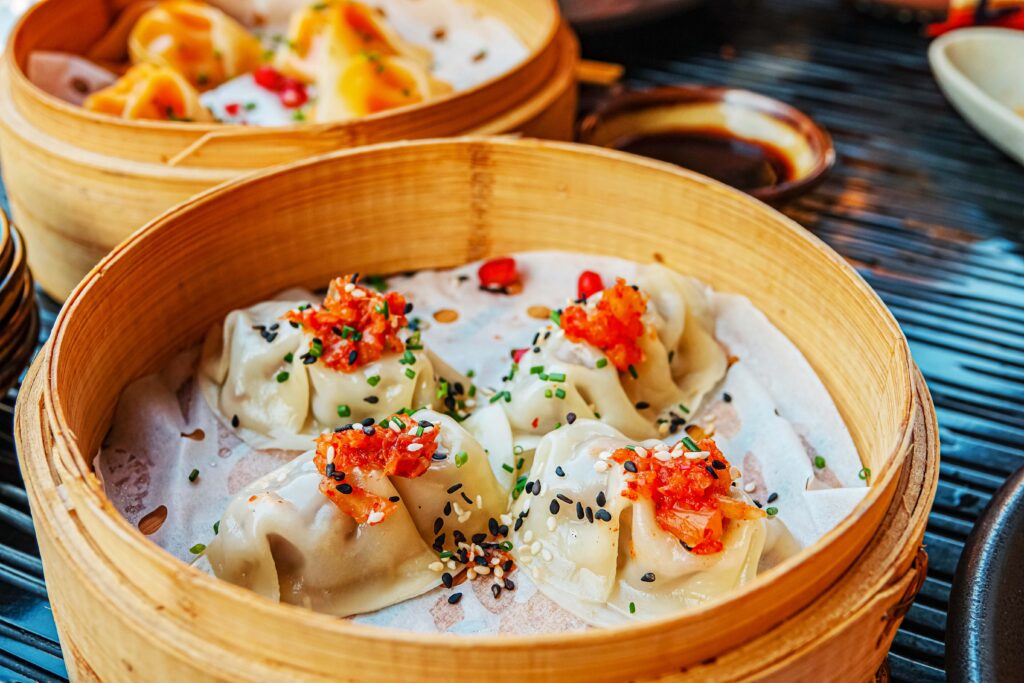
Dim Sum
Dim Sum is a traditional Chinese dish that originated in southern China and has been enjoyed for over a thousand years. The name “Dim Sum” literally means “touch the heart,” referring to the small bites of food that satisfy both hunger and the palate. Dim Sum originated as a way for travelers to rest and refuel along the ancient trade routes of southern China.
Over time, Dim Sum evolved into a distinct culinary tradition, with a wide variety of small plates served in tea houses and restaurants.
These days, Dim Sum is a popular dish enjoyed worldwide, particularly in Chinese communities. It is often served as a communal dining experience, with friends and family gathering to enjoy a variety of small plates and steaming cups of tea. Regardless of where it is enjoyed, Dim Sum remains a beloved and iconic dish that embodies southern China’s flavors and culinary traditions.


